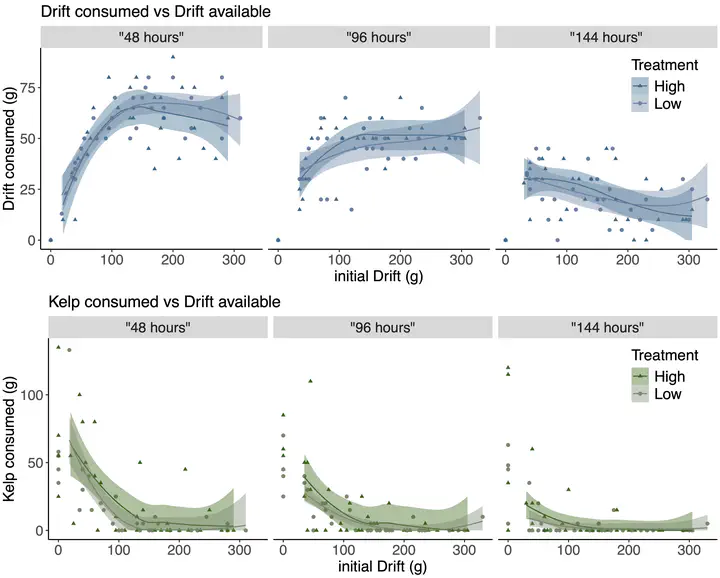
Abstract
Rocky reef kelp forests can exhibit abrupt shifts between forested and barren states where unchecked sea urchin grazing inhibits kelp recovery. Forefront to urchin barren formation is a behavioral switch where sedentary urchins become active and graze upon attached kelp. This is hypothesized to occur when the availability of drift (i.e., detached kelp on the surface of the reef), which urchins are believed to prefer over intact and attached kelp, declines. Although observed repeatedly, the density-dependent nature of this apparent resource preference has not been characterized quantitatively. We used a series of subtidal functional response experiments in central California, USA, to quantify how consumption rates by Strongylocentrotus purpuratus (purple urchins) on Macrocystis pyrifera (giant kelp) and drift varied with their relative availability and over time as urchins became satiated. Our experiments indicate that the preference for drift over kelp is strong when drift and kelp are at equal abundance, that the abundance of drift has a strong effect on kelp consumption but not vice versa, and that the preferences for drift is indeed density dependent with the qualitative switch to a greater preference for kelp occurring when the availability of drift declines below approximately 1 g of drift for every 82 g of kelp. Our analyses suggest further that maintaining a minimum of approximately 1 g of drift for every 1 g of kelp is sufficient to all but preclude urchins from grazing on live kelp. We recommend these thresholds be used by managers to inform the use of drift subsidies to preserve and restore kelp forests.